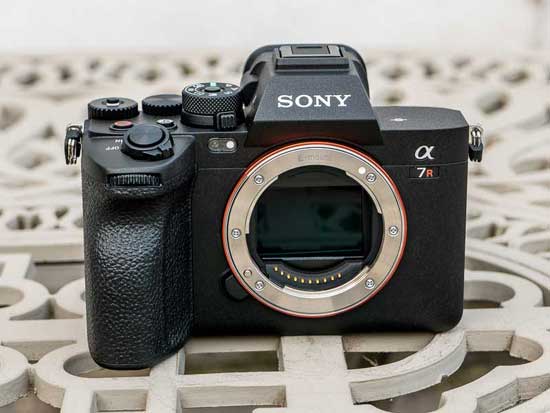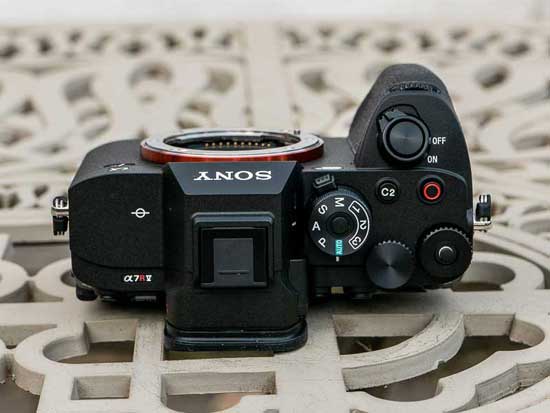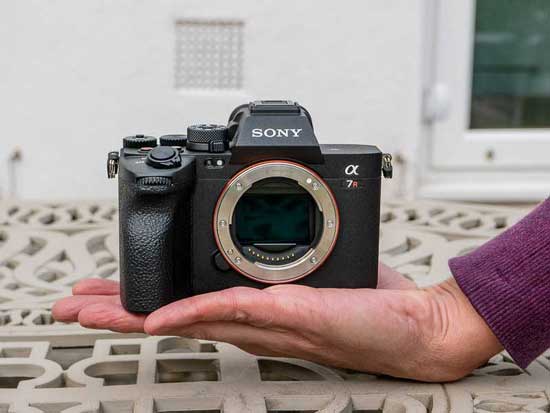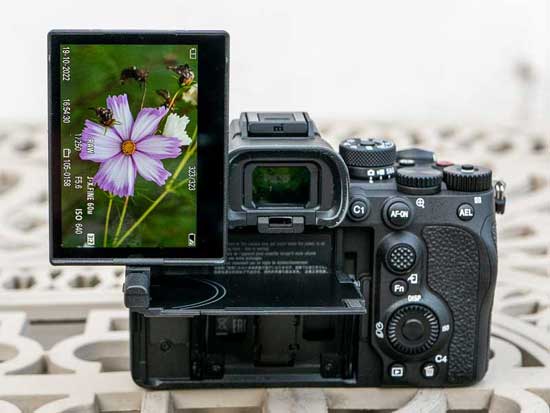Sony A7R V First Impressions

The A7R V is one of the most capable cameras that Sony has ever released, but it's also one of the most expensive too, second only to the flagship A1 in the extensive Alpha range.
We got hands-on with the A7RV recently, so find out what we think of this new mirrorless model by reading our detailed first impressions...
The A7R V is one of Sony's most ambitious full-frame sensor cameras to date, both in terms of what it offers and how much it costs.
Successor to the popular 3-year-old A7R IV, the new A7R V may look very similar to its predecessor but it boasts a number of significant improvements under-the-hood that in some ways means that it out-performs even the flagship Alpha 1 model.
At its heart is the same 61 megapixel backside-illuminated (BSI) sensor as the A7R IV, but which Sony promises will deliver improved basic image quality thanks to its new processor.
This is paired with dual Bionz XR processors, as previously debuted in the A1, which powers all of the A7R V's principal new features.
For example, the versatility of the the Pixel Shift Multi Shooting mode has been greatly expanded, as this new model can now automatically detect and correct small movements in the 16 images, such as leaves in trees or people. On the A7R IV this mode only really worked with completely static subjects.

Sony has added an AI deep learning processing unit to the newer camera which enables it to recognise far more subjects than both the previous A7R IV and flagship A1 model, and also greatly improves the detection of humans and animals/birds.
We tested it on a range of subjects including birds, cars, insects and of course humans, and were blown away both by how quickly the subject was recognised and by how tenacious the camera was in tracking it.
With a wealth of customisation options for each different subject, you really can fine-tune what is already a very capable out-of-the-box system to suit your own specific requirements.
As the AI processor unit is exclusively built-in to to the new A7R V, for the moment at least it means that this new model out-performs even the flagship Alpha 1.
Wildlife photographers will also love the camera's Multi Resolution capabilities. You can quickly switch from 60 megapixel full-frame to 26 megapixel APS-C stills when shooting Lossless Compressed RAW or JEPG/HEIF at the push of one customisable button without the need to change either focal lengths or lenses., enabling you to instantly "zoom in" on your subject.

The Alpha A7R V is also a much better video camera than the previous model, offering a large number of significant upgrades that position it closer to the flagship A1, including the ability to record at 8K/25p and 4K/60p quality, albeit with a mild 1.2x crop.
The burst shooting rate of the new model is exactly the same as the old one - 10fps with either the mechanical or electronic shutter - but the buffer size has been greatly increased so that it takes a lot longer for the camera to slow-down the shooting rate.
While the A7RV's burst rate lags behind some more recent cameras with stacked sensors, 10fps may still be more than fast enough for most shooting situations that you'll encounter, especially with the much larger buffer on-board.
The A7R V is virtually identical to its predecessor in terms of its external design, with a couple of buttons swapping positions, the addition of a Still / Movie / S&Q dial located under the shooting mode dial, and a customisable exposure compensation dial that is now is unmarked. Long-time users of the A7R series will be instantly familiar with the new model.
The new Alpha A7R V has exactly the same viewfinder as the A7S III, a 9.44M-dot OLED Quad-XGA unit which outshines the 5.76M-dot EVF on the previous A7R IV model.

One of the most significant upgrades on the A7R V is its staggeringly good LCD screen. Bigger and higher-resolution than its predecessor's, the biggest change is the new screen's sheer versatility.
This incredible new 4-axis multi-angle screen that can be flipped out to the side, rotated to the front, folded against the back of the camera to help protect it, and set to many other positions in-between.
It makes the camera ever-so-slightly thicker than its predecessor, but more than makes up for that with its incredible versatility - this is simply one of, if not the best, LCD screens that we've ever used in 20 years of reviewing digital cameras!
The same is almost equally true for the A7R V's image stabilisation system, which marks a big step forward for IBIS in Sony Alpha cameras that have previously all been seemingly capped at 5.5 EV steps of compensation.

Thanks to a newly redesigned stabilisation unit the A7R V now offers up to 8 stops of in-body stabilisation, making it currently the most capable Alpha camera in this regard.
Both of the new A7R V's memory card slots can be used for either SD UHS-I/II compliant memory cards or faster CFexpress Type A cards, just like the Alpha 1.
It also offers a number of connectivity upgrades including remote tethered shooting via wireless LAN or USB, 2.4GHz and 5GHz wi-fi, FTP transfer, and the ability to operate as a 4K/15p webcam.

It may look a lot like its predecessor, but after using the new A7R V for a while it's clear that this is one very capable camera that in some ways actually outshines the awesome Alpha 1, most notably the more capable IBIS, more versatile LCD screen, and more encompassing AF system.
With a price-tag that's significantly lower than the A1, for lots of photographers the A7R will make a lot of financial sense whilst also being a more "capable" camera in several important ways.
Overall, we've come away very impressed with the new A7R V, a hybrid powerhouse that is much more than just Sony's latest high-resolution camera...

Loading comments…